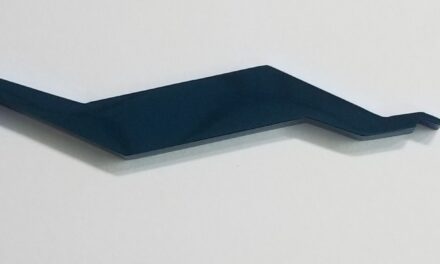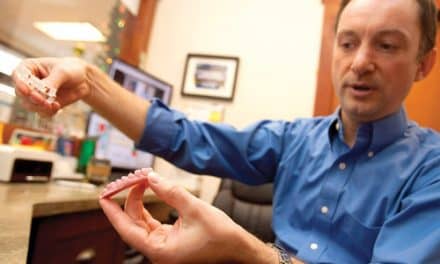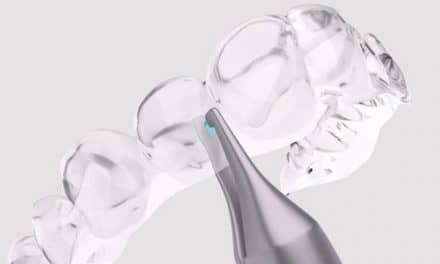In this article, I set out to review the history of orthodontic appliance delivery systems and more specifically discuss the current relevance of Invisalign® treatment in the solo and small group practice setting in North America. The article is not meant to discuss or address the clinical efficacy of Invisalign but rather will focus on the business facts around Invisalign using current market data available. Conclusions about this data can be made by the reader.
There is certainly no shortage of comments and opinions around the topic of Invisalign, with clinical and business effects discussed frequently over the last several years from speaker podiums, in orthodontic journals, and among various orthodontic Facebook groups. Just a few of the groups I follow that have threads on this topic include: Mari’s List, Ortho101, OrthoPreneurs, and Elevate Orthodontics (podcasts).
I isolate the Invisalign product here because there is specific data on the company and product available from both the manufacturer and practice owners. I recognize that other aligner options exist in the market—primarily Invisalign’s direct competitor, Clear Correct, as well as other aligner products available from various vendors. However, there is little public data available discussing the market adoption and sales volume of these products. Further, our valuation studies from Bentson Copple & Associates find that while most practice owners track Invisalign starts separately from brackets, they have not made separate categories to track the use of other aligner products, thus making the task of any comparative analysis extremely challenging.
A Brief History
Since the use of Invisalign in practices is relatively short with respect to the history of appliances used to move teeth, a brief history of how the specialty has evolved regarding the use of various appliances is useful. This serves to provide some perspective with regard to time and scope of orthodontic treatment prior to discussing the current data around the use of Invisalign.
While it is generally acknowledged that the idea of moving teeth can be documented as far back as the time of the Pharaohs, what follows are the generally accepted dates and facts about the evolution of appliances in orthodontics since the early 1700s.
[sidebar float=”center” width=”400″]
1728: The first attempt to scientifically move a tooth was made by French dentist Pierre Fauchard. He used an arch-shaped metal band with holes drilled in preselected sites giving only tipping control in one dimension.
1757: French dentist Etienne Bourdet followed Fauchard with his book The Dentist’s Art, devoting a chapter to tooth alignment and appliances.
1819: Francois Delabarre introduced the wire crib, which marked the birth of contemporary orthodontics.
1841: The term orthodontia was coined by Joachim Lefoulon.
1858: Norman W. Kingsley, a dentist, writer, artist, and sculptor, wrote the first article on orthodontics, and in 1880, his book, Treatise on Oral Deformities, was published.
1876: J.N. Farrar wrote two volumes entitled A Treatise on the Irregularities of the Teeth and Their Corrections. Farrar was good at designing brace appliances, and he was the first to suggest the use of mild force at timed intervals to move teeth.
1890 to 1920s: Edward Hartley Angle dominated orthodontic thought and is known as the father of modern orthodontics.
1932 to 1940s: Angle’s influence continued by his student, Charles H. Tweed, who introduced the idea of anchorage as an important part of treatment.
1955: Levern Merrifield, one of Tweed’s most brilliant students, introduced improvements to the Edgewise Appliance.
1960: Paul Begg reviewed Angle’s views on diagnosis and launched the Begg technique using the angle ribbon appliance but adding a vertical slot to the bracket.
1970: Lawrence Andrews, in an attempt to eliminate the need for archwire bends, developed the Straight-Wire Appliance; this concept was that the brackets would move the teeth in the desired direction.
1972: First commercial self-ligating bracket, Edgelock, by Ormco introduced. However, as early as 1935, the idea of a self-ligating bracket began to take shape.
1975: Dr Ron Roth collaborated in the evolution of the Straight-Wire appliance with other orthodontic minds, and the idea of using a single appliance system with minimal number of brackets for extraction or non-extraction became known as the “second generation” of straight wire.
1970s: Dr Earl Bergersen created the passive Ortho-Tain appliances, which look like a custom plastic mouth guard to correct or greatly diminish many types of orthodontic problems.
1975: Dr Craven Kurz started developing a system to place braces on the inside surfaces of the teeth—lingual braces.
2000: Invisalign aligners were first made available to the public. [/sidebar]
As far back as 1945, orthodontists realized that a sequence of removable plastic appliances could move teeth toward a predetermined result. Some orthodontists even made simple plastic “aligner trays” in their offices for minor adjustments. Soon similar products began appearing on the market
Current Align Technology Results
Now, in 2017, the Invisalign system from Align Technology Inc, which was founded in 1997, is the most recent major introduction in orthodontic appliance delivery. What have been the results?
In 2016, Align collected $1.08 billion in revenue. Currently, the company employs just over 6,000 employees, and has treated 4.5 million patients with their aligner system. Investors have pushed the Align stock (ALGN) to a current market value of over $12 billion with the stock currently trading at above $150 per share. For context, the stock was trading at just above $80 a share in July 2016 and closed at $17.31 per share on the first day of public trading in January 2001. Growth in North America has been in the low 20th percentile range over the last few years, while global growth has been in the high 40th percentile range. Sales of the iTero® scanner have been similarly impressive over the last 24 months, outpacing North American growth and just behind global growth. Align has marketed the Invisalign product directly to the consumer with massive dollar investments in direct to consumer advertising campaigns, helping to brand Invisalign as a product almost universally known by today’s orthodontic consumer. Additionally, Align made an investment in Smile Direct Club (SDC) last year, gaining a place at the boardroom table and a voice in the choice of products it promotes in their doctor-directed model of shipping aligners directly to consumers, a form of teledentistry.
In 20 years, Invisalign has moved from start-up to cash-flow positive, and has become a recognized global brand in orthodontic care. At the conclusion of their first quarter of 2017, Align had no debt and a cash pile of approximately $700 million.
The Invisalign product has been heavily patented with several patents due to expire this year. However, their product and processes are protected with over 700 patents. The scale of their current delivery has awarded them the moniker of “largest digital printing manufacturer in the world,” currently printing over 200,000 unique aligners per day. Competitors will surely arrive on the scene as their intellectual property expires, but their lead in process development and scale of delivery means new competitors are faced with a steep slope and herculean investment of dollars to compete effectively.
Market Data
Perhaps the best barometer of market data for the orthodontic marketplace in North America is data held by Gaidge Inc, an analytics product that pulls and reports data from several leading practice management systems. Current Gaidge data shared with Bentson Copple & Associates for presentation purposes shows that practices that use Gaidge as an analytics tool grew their Aligner treatment therapy by 33.3% in 2015, 24.7% in 2016, and 27.8% through the first half of 2017. This compares with average production growth for the same practices of 2.1% in 2015, 4.0% in 2016, and 2.3% in the first half of 2017. This data indicates that growth with aligners is far outpacing overall average production growth.
Bentson Copple & Associates Data
In our valuation studies, we are seeing a general increase in the use of Invisalign in the practices we value. Recently, we conducted a study of practices using Invisalign in an attempt to gain a deeper understanding of certain metrics that can be attributed to practices incorporating Invisalign versus those that do not. While we are still adding practices to the study, the first analysis consisted of 46 recently valued practices. In order to qualify for the study, the practice considered needed three components:
- Track Invisalign starts separately from bracket starts
- Track Invisalign expenses as a separate line item on their practice profit & loss statement
- Be valued by Bentson Copple & Associates (so that we could confirm and have a standard to compare overheads).
We found 46 practices that met these criteria and were valued by Bentson Copple & Associates in the last few years. The percent of all patients that were in Invisalign treatment vs brackets ranged from 4% to 40%. Generally, we found that these practices were larger than the average practice we valued in 2016 ($2,083,739 vs $1,672,166); overheads were only slightly over our average (58.3% vs average of 57.0% in our 2016 group of valued practices). We also found that the average revenue per full time equivalent in the Invisalign practice study was $203,668.
While we are still adding practices to this study to help form our understanding of how a practice that incorporates Invisalign as a practice modality differs from those that do not, our initial view is that the Invisalign practice is likely growing above market averages, is larger with respect to net collections, has slightly higher overhead, and is hedging the Invisalign lab fee by a more conscious effort to increase the amount of labor done by existing staff (meaning the Invisalign practice necessarily needs to increase its revenue per FTE, a measure of efficiency, in order to keep overhead and therefore profit margins near historical norms).
Conclusions
While there continues to be great discussion around the future of orthodontics moving from analog to an end-to-end digital platform of which Invisalign is a major contributor, enough information exists from the American Dental Association, Invisalign, and SDC that there are many more patients that could benefit from orthodontic treatment than there are currently in treatment. The question yet to be fully answered is whether a move to the digital platform can expand the existing number of patients via faster, more convenient, and more efficient treatment. However, the current business trend data available indicates that incorporating Invisalign treatment as part of your practice modality is worth consideration in modern day orthodontic treatment. OP
Chris Bentson is currently a partner of Bentson Copple & Associates based in Greensboro, NC. The company serves the orthodontic community by performing practice valuations, providing recruiting services, and negotiating transactions with both buyers and sellers within the United States. Bentson frequently lectures at AAO meetings, regional orthodontic society meetings, orthodontic resident programs, study clubs, and orthodontic user meetings. He also serves as Editor-in-Chief of the Bentson Copple reSource. Bentson can be reached via email at [email protected] or by phone at (800) 621-4664.










